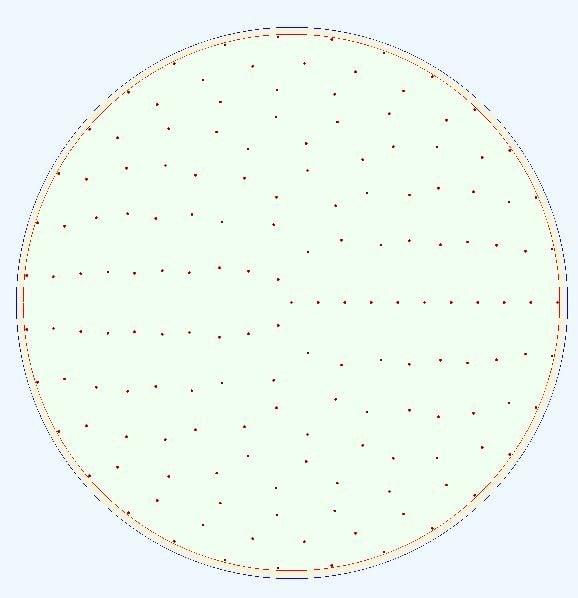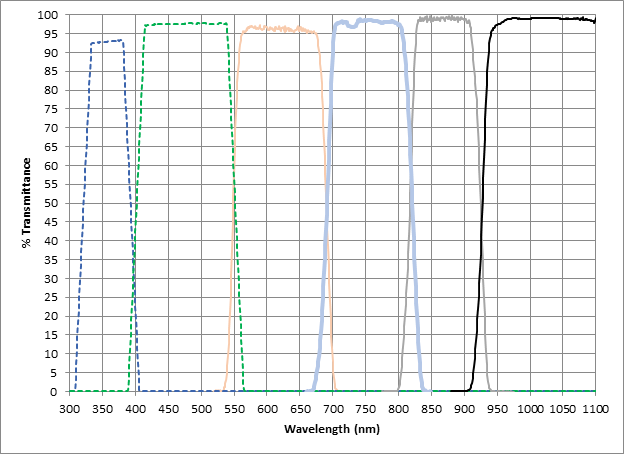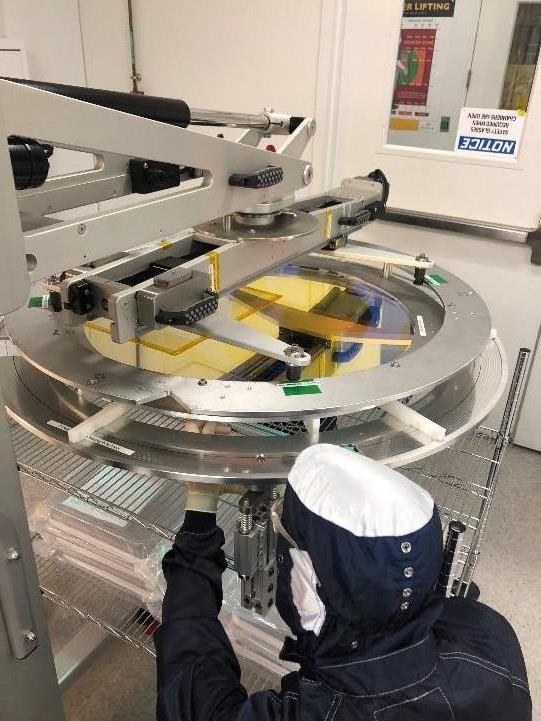Materion’s support for the exciting LSST Telescope continues as we have shipped the remaining first-of-its-kind filters to the Vera C. Rubin Observatory in Chile. The telescope will help advance the Observatory’s mission to build a system that will produce unprecedented astronomical data. It will soon begin a ten-year span of imaging billions of celestial objects in six colors and will provide the first time-lapse view of our Universe.
Materion Precision Optics coated the LSST Camera’s six filters, which include bands u, g, r, i, z, and y. The u-band is the final filter that was shipped. This telescope is really the world’s largest point and shoot camera. Our filters break this “broadband” into six different colors. In addition to creating stunning images, the astronomers will use the colors for a variety of calculations. The unparalleled value of Materion coating the substrate material on each of these one-of-a-kind bands represents our key enabling technologies for the broadband spectral mapping.
The curved filters are the largest precision filters we have ever fabricated. To meet the needs of this project Materion developed processes in one of our large coating chambers specifically for these challenging optics. This large chamber can accommodate optics up to 1.8 meters in diameter, although with the less stringent uniformity requirements.
To measure the spectral transmission, which is the amount of light that passes through specific wavelengths or frequencies of light, the team developed hardware and software to perform the measurements and data analysis. A spectrometer provides the ability to scan in wavelengths over a broad range of incident angles at any location within the clear aperture of the optical filter. For these measurements, non-normal incidence extending from 13 to 24° from the local surface normal are mapped over the entire 785 mm diameter of the filter.
The mapping for the LSST was performed at 159 locations as indicated in the figure below.

Figure 1 surface of Optic with locations of the spatial sampling grid.
The transmittance measurements of the appropriately weighted average of each of the filters is shown below.

One of the interesting aspects of this project was the slope of the individual bands and their locations. The specifications were such that there needed to be no gaps between the filter bands, any variation in the crossover to be smooth and the filters needed to cross at the 50% point of the normalized transmittance function.
In addition to the tight constraints on the location of each of these bands the uniformity of their response was also important. A typical curve of the wavelength vs. position, as shown below, for the u filter. In the figure below the spectral location of the red and blue edge half power location is plotted for each of the 159 locations for the u filter. This will help with the goal to map the variation of the universe by taking many pictures over a ten-year period. On different nights the same objects will be imaged through different locations on the filters, and this will allow scientists to be able to eliminate the variation in their optical system so that any variation they see in the object is due to changes in the object, not the telescope.

In addition to transmittance the spectrometer can measure optical density at the OD4 level. It is important to be able to measure what we make to; measurement is a log of the transmittance of how much of the light is blocked at a given wavelength.
Our innovation makes Materion Precision Optics ready and capable to take on any large area optical filters project.

Since the 1970s, Materion has been supporting major U.S. and international space and astronomy missions. It’s exciting to look back at how the spirit of innovation that drives us today has played such a crucial role over the years in the advancement of space technologies and programs. Materion’s proud legacy of large area optics can be found on many ground-based astronomical instruments including Gemini Observatory, Southern African Large Telescope (SALT), Keck Observatory, National Astronomical Observatory of Japan, and University of Hawaii Institute for Astronomy (PanStarrs camera).